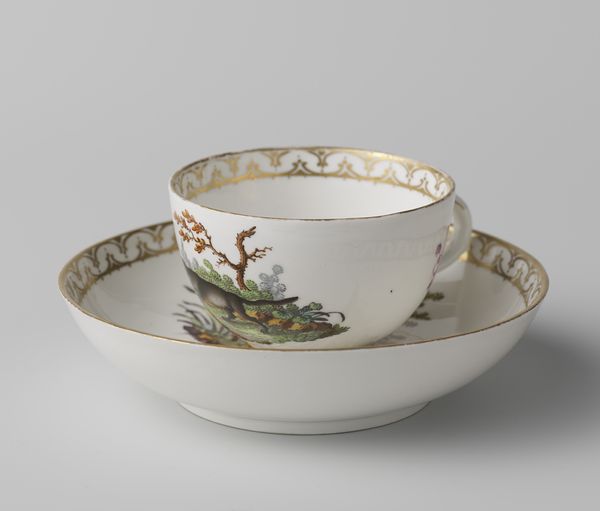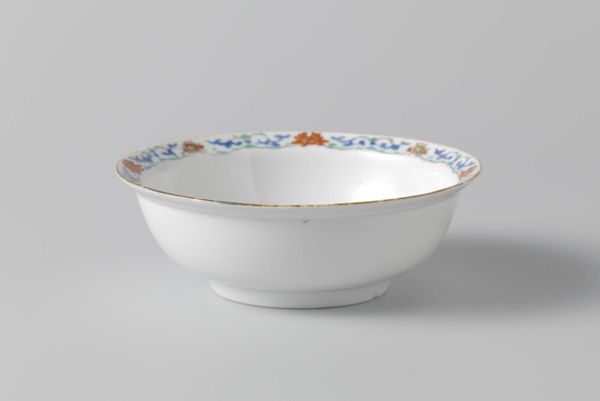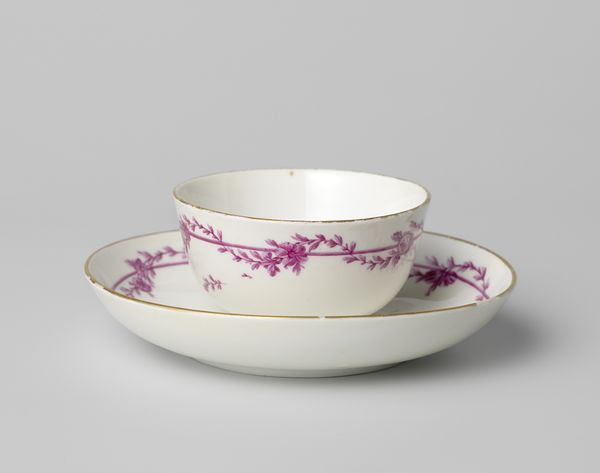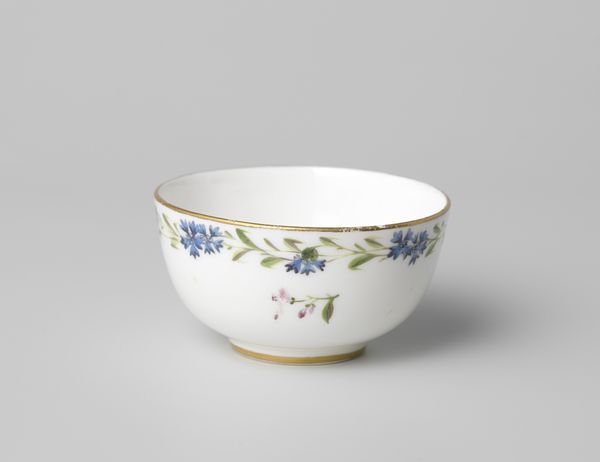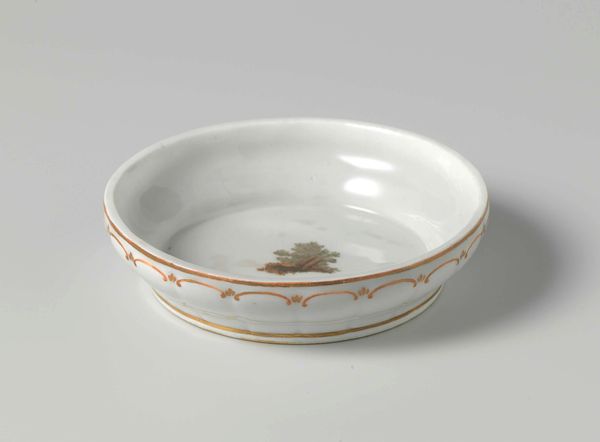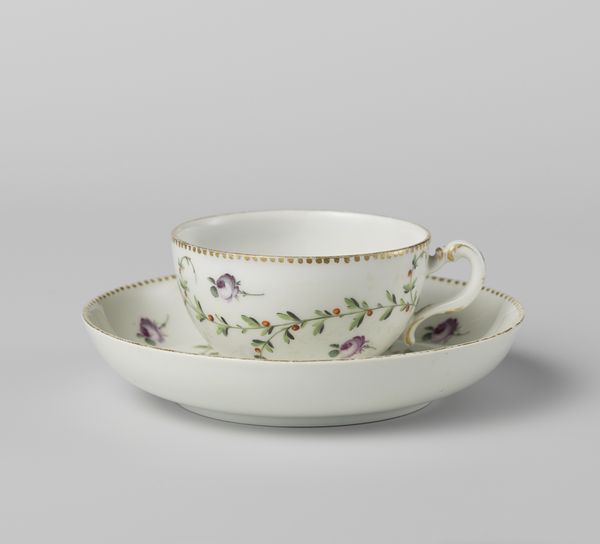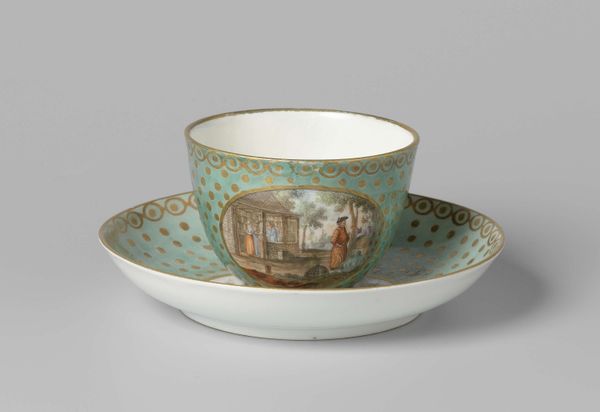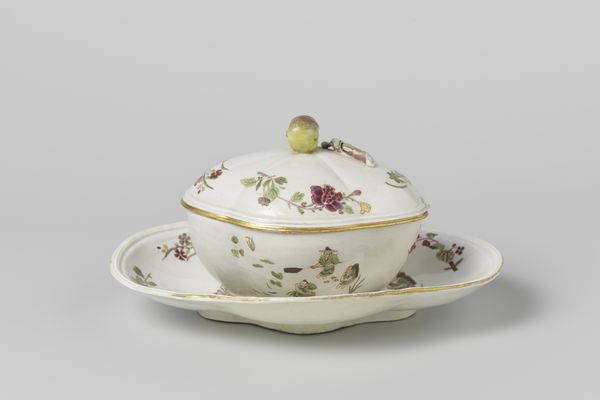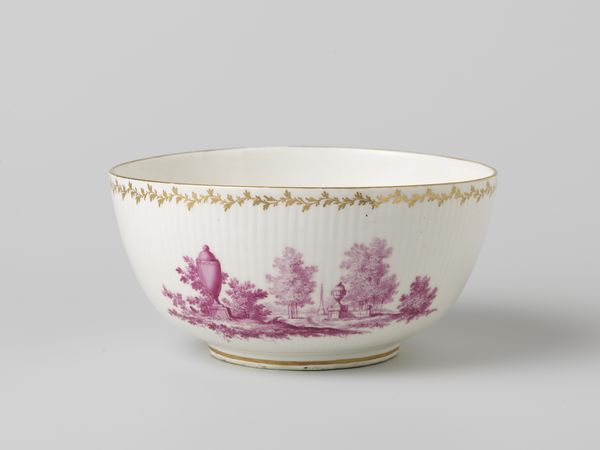
Kop zonder oor en schotel, veelkleurig beschilderd met een vrouw in landschap waaronder rocailleornament 1759 - 1771
0:00
0:00
porcelain
#
porcelain
#
genre-painting
#
miniature
#
rococo
Dimensions: height 3.9 cm, diameter 6.5 cm, height 3 cm, diameter 12.5 cm
Copyright: Rijks Museum: Open Domain
Editor: This is a beautiful porcelain cup and saucer from the Weesper porseleinfabriek, dating back to between 1759 and 1771. The miniature scene of a woman in a landscape is so charming, almost like a peek into another world. How should we interpret this kind of object within the context of its time? Curator: It’s fascinating to consider how objects like these functioned socially and culturally. Porcelain during this era, especially pieces meticulously hand-painted like this, served as markers of status and refinement. This wasn’t just a cup; it was a symbol, communicating taste, wealth, and an engagement with a particular visual language – the Rococo. Editor: The Rococo influence is clear with those little shell ornaments. Was it a common theme to depict scenes of leisure and the outdoors on such objects? Curator: Absolutely. Rococo art frequently romanticized nature and idealized pastoral life, and that's something largely enjoyed by an aristocratic demographic. By adorning everyday objects with these themes, the patrons brought this desired lifestyle into their own domestic sphere. How does seeing the genre scene on this specific kind of item, like a teacup, make you reflect upon who enjoyed it, where, and in which social activities? Editor: It makes you realize this wasn't simply functional but a decorative art piece to stimulate conversation. I imagine women enjoying tea while discussing these pastoral depictions. Curator: Precisely. And thinking about the labor involved - both the manufacture of porcelain and the intricate painting – reminds us of the social and economic structures underpinning this scene of leisure. The piece acts as a subtle window into a broader world of production and consumption. Editor: That makes me view it differently. I was initially caught by its beauty but thinking about the historical context makes the cup so much more interesting! Curator: Agreed. It demonstrates how even the most seemingly innocuous object can speak volumes about the social, cultural, and economic forces at play in its time.
Comments
No comments
Be the first to comment and join the conversation on the ultimate creative platform.

